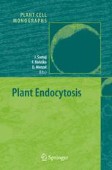Search
Search Results
-
Introduction
The Caspian Sea, the largest enclosed basin on the planet, is distinguished by special natural conditions, contains rich natural resources...
-
Pollution of the Caspian Sea
The pollution of Caspian Sea waters and bottom sediments was described on the basis of long-term monitoring data from 1978 to 2004. It was shown...
-
Introduced Species
Five species of diatom algae, ten species of epiphyte-fouling algae, seven species of plankton invertebrates, 21 benthic organisms and three...
-
Economic and International Legal Dimensions
The Caspian Region has abundant hydrocarbon resources (oil and gas), as well as biological resources (fish), particularly the unique sturgeon,...
-
Kara-Bogaz-Gol Bay
Kara-Bogaz-Gol Bay is a large lagoon east of the Caspian Sea and normally covers an area around 18000 km2 and is only a few meters deep. It is...
-
Auxin Transport and Recycling of PIN Proteins in Plants
Polar transport of the phytohormone auxin is mediated by plasma-membrane and endosome localized carrier proteins. PIN proteins are the best...
-
Environmental Design Considerationsfor Somatic Embryogenesis
In addition to the biomolecular, physiological, and biochemical aspects of somatic embryogenesis, careful design of environmental conditions is...
-
Origin, Development and Structure of Somatic Embryosin Selected Bulbous Ornamentals: BAP as Inducer
Somatic embryogenesis in three important ornamentals is discussed in this chapter. Direct somatic embryo development on the explant tissues...
-
Differential Gene Expression During Somatic Embryogenesis
Somatic embryogenesis is a complex developmental program in which somatic cells are induced for a commitment towards forming totipotent...
-
Embryogenesis in Catharanthus roseus: Roles of Some External Factors in Proliferation, Maturation and Germination of Embryos
Catharanthus roseus is an important medicinal plant that contains two well-known anticancerous alkaloids, vincristine and vinblastine. Cell...
-
Screening and Analysis of Pollen Tube Mutations
Although the cytology of the cellular aspects of male gametophytic development has been very well described for several species, molecular...
-
Participation of Plant Hormones in Determination and Progression of Somatic Embryogenesis
In vitro culture protocols have been developed for many species, mainly using empirical approaches, to induce somatic embryogenesis from various...
-
Conclusions
This conclusion completes one more review concerning the natural condition of the Caspian Sea and the principal trends of change in the second...
-
Natural Chemistry of Caspian Sea Waters
Principal features of the natural chemistry of Caspian Sea waters are assessed: the salt(ionic) composition, dissolved oxygen, active reaction...
-
Physico-Geographical Conditions of the Caspian Sea
The main physico-geographical features of the Caspian Sea are under consideration. They include brief description of the coasts, bottom relief and...
-
Rab GTPases in Plant Endocytosis
The Rab family is part of the Ras superfamily of small GTPases. In eukaryotes Rab GTPases are present as members of gene families, and the...
-
Why Somatic Plant Cells Start to form Embryos?
Embryogenesis in plants is not restricted to the fertilized egg cell but can be naturally or artificially induced in many different cell types,...
-
Somatic and Zygotic Embryogenesis in Avocado
Avocado is a species widely cultivated for its highly nutritious fruit. Currently, soil-borne diseases such as Phytophthora root rot are severe...
-
Protein Markers for Somatic Embryogenesis
The capacity for somatic embryogenesis is a remarkable property of plant cells. Somatic embryogenesis is the process by which somatic cells...
-
MDR/PGP Auxin Transport Proteins and Endocytic Cycling
Auxin is an essential regulator of plant growth and development. Polarized transport of auxin is responsible for apical dominance, tropic growth,...
